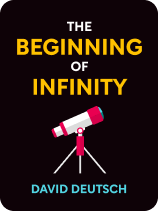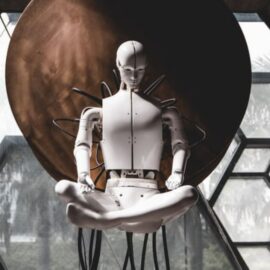

This article is an excerpt from the Shortform book guide to "The Beginning of Infinity" by David Deutsch. Shortform has the world's best summaries and analyses of books you should be reading.
Like this article? Sign up for a free trial here .
What is Richard Dawkins’ definition of memes? How does culture rely on successful memes?
Nowadays, memes are humorous ideas or images spread via the internet. But Richard Dawkins originally defined memes as ideas people shared, which created and changed cultures.
Learn more about the connection between Dawkins’ memes and culture from David Deutsch’s book The Beginning of Infinity.
Cultures Co-evolve With Memes
Deutsch says that cultures consist of ideas that people share—in other words, cultures are built on successful memes (using the original meaning of “meme,” as Dawkins defined it). Deutsch identifies two different types of Dawkins’ memes, and the cultures that come from them:
Rational memes are beneficial, based in knowledge, and encourage people to continue building knowledge. For example, the theory of gravity is a rational meme: It’s based on our current best understanding of reality, and it replicates because we keep teaching new generations about gravity. Rational memes create dynamic cultures, which change and evolve as the memes within them do.
Anti-rational memes suppress thought and creativity. They replicate via blind devotion and intolerance for questions or doubts. Anti-rational memes lead to static cultures, which maintain stability by never allowing anything to change. For example, many orthodox religious sects are static cultures: All members must believe the same things and perform the same rituals, generation after generation. Deutsch adds that static cultures are doomed to collapse sooner or later; their inability to create new knowledge means that they can’t respond to unforeseen dangers, and eventually one such danger or another will destroy them.
Why Static Cultures Are Fragile
In Antifragile, mathematician Nassim Nicholas Taleb explains why some things break after being damaged while other things become stronger:
- Fragile systems are rigid and unable to change. As a result, no matter how strong those systems are, sooner or later they’ll break. Almost any nonliving object is fragile, whether it’s as easily broken as a pane of glass or as durable as a car engine.
- Antifragile systems can change and adapt, not just recovering from damage but actually becoming stronger from it. The classic example of an antifragile system is a muscle: Exercise damages the muscle, which becomes stronger after repairing itself.
In the case of static versus dynamic cultures, we’d say that static cultures (born from unchanging anti-rational memes) are fragile. They refuse to adapt to change, and thus they’re bound to break eventually. For example, a culture that tried to continue as normal in the face of a deadly plague might end up being destroyed by it.
However, dynamic cultures (born from evolving rational memes) are antifragile. They adapt to stressors and become stronger from learning how to cope with them. If faced with that same deadly plague, a dynamic culture would learn how to avoid and treat that disease; then, going forward, that culture would have improved hygienic and medical techniques to keep its people healthy.
Group Decisions Are Fatally Flawed
On the topic of static versus dynamic cultures (and specifically, how those cultures are run because of Dawkins’ memes) Deutsch says that many people have a flawed view of how to make a good decision. In short, it’s a mistake to think about choosing the “best” option from a preset list of choices by weighing the pros and cons of each. Instead, truly effective decision-making requires creating new options that didn’t exist before.
Furthermore, since making good decisions requires new and creative solutions, Deutsch adds that group decision-making is fatally flawed by nature. That’s because, when a group of people must make a decision, it inevitably starts with arguments about “pros and cons,” of existing ideas, and ends with the group choosing one option off of a short list. Generally, it’s the option that most people in that group can be convinced to accept. It’s an inefficient, irrational, and imprecise process.
Deutsch’s solution is that decision-making bodies—for example, governments—should be primarily concerned with two things:
- Making it easy to overturn bad decisions in favor of new ideas
- Making it easy to replace group members who perform poorly
A group that can easily fix its mistakes with new ideas, and easily replace people who make bad decisions, is as good as group decision-making is going to get. A group that adheres to those two principles will be able to constantly evolve as ideas and culture do and to make decisions reflecting that evolution.

———End of Preview———
Like what you just read? Read the rest of the world's best book summary and analysis of David Deutsch's "The Beginning of Infinity" at Shortform .
Here's what you'll find in our full The Beginning of Infinity summary :
- That there is an infinite amount of knowledge in the universe
- Why humanity must never stop learning
- How new knowledge changes civilization for the better






